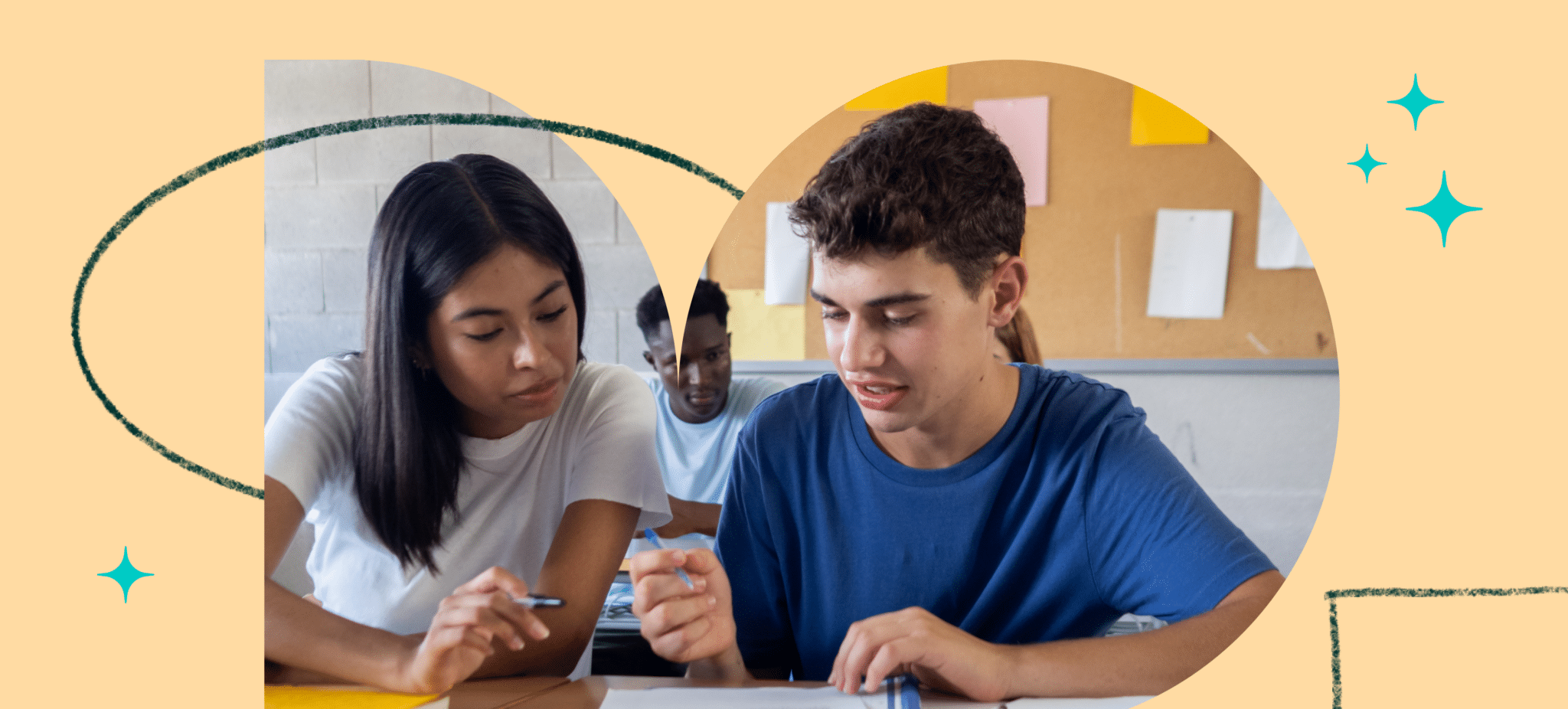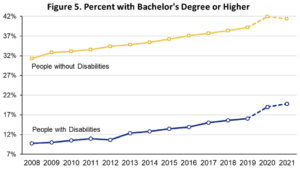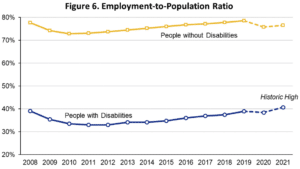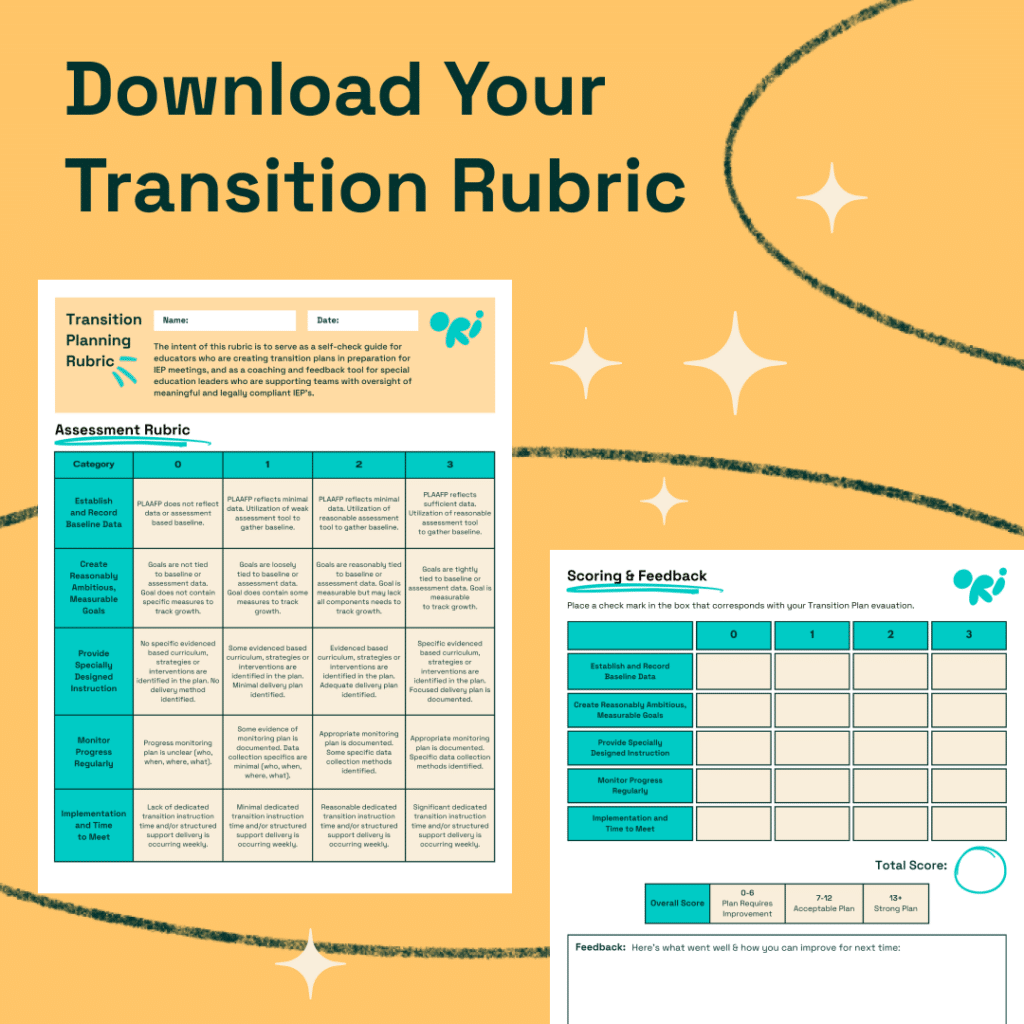


Transition coordinators and special education teachers are painfully aware of the lack of engaging, age-appropriate activities in transition curricula. When browsing online resources, you instantly notice the almost complete lack of transition activities suitable to classroom settings.
This is no surprise, considering topics such as developing a positive attitude, communication skills, self-determination and self-esteem are rarely given the time and attention they deserve in the classroom.
With access to a range of fun, hands-on activities that help students with disabilities better understand the importance of nonacademic skills and connect them to real-world settings, transition coordinators and teachers can markedly improve instruction in these areas.
In this article, we will explore recent data and research that illustrate the gaps in transition instruction before exploring 5 examples of ready-made activities you can start using right away to stimulate the teaching of essential skills.
While there are growing trends that suggest post-secondary outcomes for people with disabilities have improved over the past few years, transition results remain unsatisfactory in key areas such as employment and further education.
The graphs below indicate a steady increase in the % of people with disabilities who hold a higher education degree or are in active employment.


While these are positive developments, the data continues to highlight the gaping disparities between people with disabilities and those without when it comes to accessing employment and further education. Digging deeper into the Annual Report on People with Disabilities in America, it is also evident people with disabilities continue to earn less than their non-disabled peers, are more likely to experience poverty and are far less likely to have access to benefits such as private health care.
These statistics have prompted a number of researchers to call for schools and districts to start addressing nonacademic skills areas that have been historically underemphasized.
For example, a meta-analysis of secondary transition literature by McConnell et al. sought to identify ‘student nonacademic behaviors associated with post–high school employment and education.’ Their analysis suggested that more attention should be paid to 10 key areas of instruction including knowledge of strengths and limitations, goal setting and attainment, persistence, and self-advocacy.
Moreover, numerous studies cited by June E. Gothberg et al. 2015, point to the benefits of developing competencies such as self-esteem and a positive attitude for academic performance as well as their effects on employability, earning power and well-being in adulthood.
However, teachers remain unconvinced. A widely cited national survey by Wehmeyer et al. indicates that many educators don’t see the value or benefit of instruction in this area. Others, feel unprepared to provide such instruction or claim they lack the necessary resources.
Transition coordinators can address these issues by:
This is where transition activities come in.
Graphic organizers, role-playing games and connect-to-home activities are all quick and easy ways to stimulate the teaching of transition skills. They help secondary students reflect on the importance of what they are learning and connect particular skills to real-world situations and emotional states.
So, let’s explore 5 engaging classroom activities for high school students to practice key transition skills. These activities are designed by professional instructional designers at Ori Learning and can be adapted to a wide variety of learning styles and needs.
Our Transition Planning Rubric is designed to support district leaders and educators in guiding their teams towards excellence in transition planning.
It provides comprehensive criteria that cover the breadth of transition planning, from gauging student engagement to evaluating post-secondary goals and services.
Expand your team’s capabilities and improve the success of IEP meetings.

Below are our 4 suggested activities complete with freely downloadable resources you can print and use in the classroom. You can utilize these as ready-made templates or adapt them to your unique curriculum needs. They are organized into categories that correspond to the most widely recognized skills needed for achieving and maintaining employment for individuals with mild to mild-moderate disabilities.
Create an action plan for a transition goal involving independent living, education, work or health.
Remember the 5 golden rules:
When giving feedback, remember to:
See what Ori Learning’s transition curriculum can do for your school or district.
In this role-playing activity, you will analyze a problem and develop a solution that works for both sides.
Scenario 1: Your coworker is texting instead of helping customers.
Scenario 2: You are doing a group project and one of the members of the group is unwilling to do their part of the project.
Pick one of the above scenarios then, decide if you should resolve the conflict.
Using the scenario you chose, prepare for the conversation you will have with the other person by looking at your own assumptions about their actions.
Use an “I feel…” statement to name your own feelings. Use this as a template:
“I feel (name your feeling) when you (name the situation) because (name the reason for your feelings).”
Imagine how the other person feels. Recognize the other person’s feelings and invite them to share their side of the story.
“I think that you feel (name what you believe to be the other person’s feelings) when (describe the situation and add an invitation to talk). Is that right?”
Imagine what the other person might say. Listen actively to understand the other person’s side of the story, share your own viewpoint, and then acknowledge the other person’s feelings.
Once you both understand that there is a problem, agree on an end goal. What do you both ultimately want?
Make a list of any obstacles that are stopping you from solving your problem. What are some possible things stopping you both from getting what you want?
Work together to come up with two or three possible solutions to help you solve your problem.
List out the pros and cons of the solutions that you came up with. Once you’ve done that, pick one to try.
Once you’ve tried out your solution, evaluate it. Did it work? Why or why not?
Transform your students into active participants in the transition planning process with these 8 proven strategies.

Create an action plan for a transition goal involving independent living, education, work or health.
Write a speech to a potential employer answering the question “Why would you be a good addition to our team?”. Use the template below to structure your speech and practice giving it to others.
Here’s an example:
I would be a great addition to your day care center because I have a lot of creativity. This means that I am always thinking of new and interesting ideas. This character strength helped me to work with my high school’s mural committee to paint murals on the walls of my high school. These murals made my school beautiful and were also educational. Having creativity will also help me in your day care center because I will use my creativity to help make many beautiful and educational art projects with the children. If I am given the chance to join your organization, this is just one of the many character strengths of mine you will see.
Remember to:
Make sure your evidence is:
In your conclusion, avoid:
Use the checklist below to evaluate your own presentation and that of your classmates.
Write a job description for your ideal future job. Use the template below.
Describe the ideal company.
Write a brief summary about the position for a newspaper or online advertisement.

